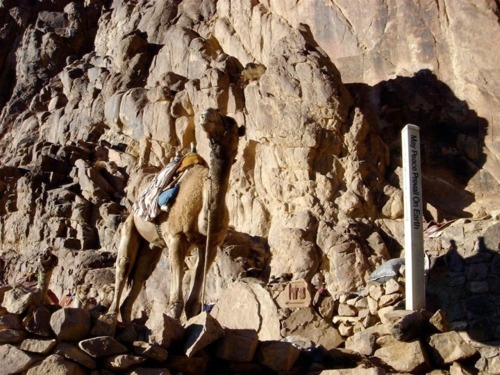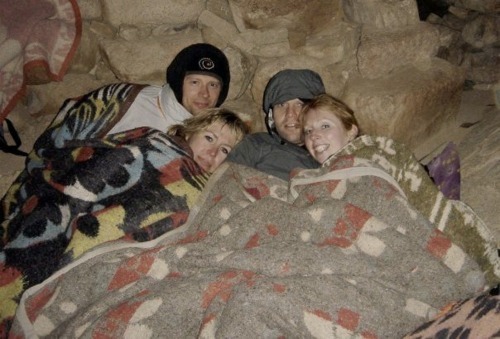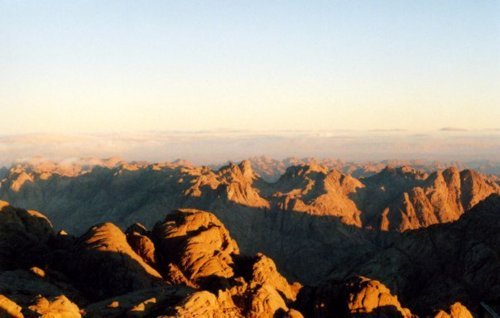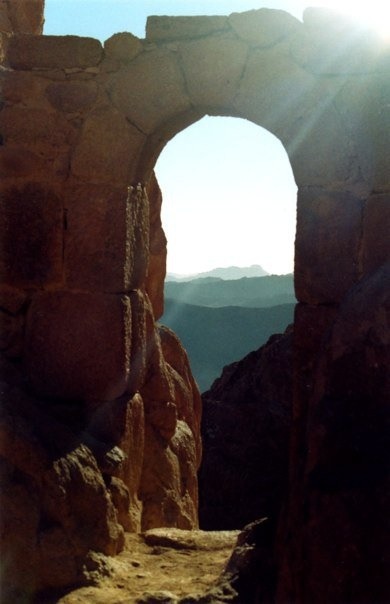When people think of Egypt, Christianity isn’t the first image that pops into people’s minds. After all, Egypt is the Arab world’s most populous country and is home to a rich Islamic tradition. Its not an uncommon sight to see men walking around with bruised foreheads, a byproduct of prayer and a physical sign of faith . Yet, up to 10% of Egyptians are still Christian, with a claim to both Africa’s oldest church and ecclesiastical school. Coptic Christians, as Egyptian Christians are known, have a long and proud history. Christianity first appeared in Egypt in the 1st Century AD and became the dominant religion by the 3rd Century, replacing the old Egyptian and Roman parthenon. In the 6th Century, Islam come to Egypt and slowly over time, through conversions, forced and voluntary alike, Islam became the dominant religion in the country. Copts have retained their traditions and history. Many Copts can be identified by a small cross tattooed onto the hand or wrist. They have some claim to be the true descendants of the pharaohs (the last true Egyptian tongue was spoken by Copts into the 19th Century, although the mother tongue of almost all Egyptians, Christian or otherwise, is now Arabic). A disproportionate amount of power and money was in the hands of Copts, although this power has been negated by the Pan-Arab and Islamic views of governments in Egypt of the past 60 years. Many Copts have fled Egypt, due to discrimination. The Coptic community has been attacked physically, with infrequent killings and bombings by Islamic groups, through legislation where construction and repair of churches is held up by red tape and in government, where few Copts are now to be found in positions of power.
Despite the current situation where Islam is the dominant religion of the country, Christianity has played a large role in the country and in turn is mentioned several times in the Bible. The place of Mose’s discovery and the place where Jesus, Joseph and Mary found refuge in Egypt are all in Coptic Cairo, a small, historic area of Cairo with several churches. We were lucky enough to go to Coptic Cairo on the day of Coptic Christmas (the Coptic calendar is different than the one we use), and it was great to be able to sit and watch the conregrations enjoying their holy day. The Red Sea, of course, plays a major role in the Bible as does another account involving Moses, that of Moses receiving the 10 Commandments from God. This happened at the top of Mount Sinai, now a popular destination for pilgrims and travellers alike.
Despite the current situation where Islam is the dominant religion of the country, Christianity has played a large role in the country and in turn is mentioned several times in the Bible. The place of Mose’s discovery and the place where Jesus, Joseph and Mary found refuge in Egypt are all in Coptic Cairo, a small, historic area of Cairo with several churches. We were lucky enough to go to Coptic Cairo on the day of Coptic Christmas (the Coptic calendar is different than the one we use), and it was great to be able to sit and watch the conregrations enjoying their holy day. The Red Sea, of course, plays a major role in the Bible as does another account involving Moses, that of Moses receiving the 10 Commandments from God. This happened at the top of Mount Sinai, now a popular destination for pilgrims and travellers alike.
It’s not at all certain that Mt Sinai is the mountain spoken off in the Bible, the Talmud and in the Koran. Initially, it was said another neighbouring mountain was in fact the mountain of Moses before this was changed to Mount Catherine (the tallest mountain in the area). It wasn’t until the 15th Century that Mount Sinai was finally designated as the mountain of lore. Still, the debate ranges and some say that the real “Mt Sinai” is more likely to be located in the northern Sinai peninsula or even in Saudi Arabia.
In keeping with the biblical traditions of Egypt, I decided that our group would be hiking to the top of Mt Sinai to see the sunrise. To say that this was a popular move would be a push. There were several voices (bear in mind, we were only a group of 6) raised in dissent. Part of the problem was to get to the peak by sunrise meant starting the trail by 3am and since we were about 2 hours from the start of the trail, it meant getting picked up at 12:30. Another problem was the hike itself with at least a couple of unenthusiastic walkers in our group. It also meant a day away from the Red Sea and the fun times in Dahab. All in all, it would be fair to say that this idea was not at all appreciated by most. However, with no deserters, we arrived at the start of the trail at about 2:30am. Of course, it is pitch-black. Luckily, we get assigned to a group, with a guide who has a torch. Just, in case, we get lost, our group’s word was Mish Mish, which I think means Apricot but is also slang for pussy and we were later told in Cairo that is also used as either a gay slur or as a way of gay introduction. Either way, I’m sure the guide was taking the piss when he made us the mish mish group. The hike is up a trail used by donkeys and camels, who can carry lazy tourists most of the way to the top. Its not lit, s we made our way by moon and starlight plus the occasional torch which illuminated it enough for us to see the way. Every 20 minutes or so, we would hear crys of Mish Mish and wait for our group to meet up with our guide. The walk up the trail is pretty easy, a series of switchbacks covered in camel dung, until we reached Elijah’s hollow, where there was time for a warming cup of tea and a chance to recoup before the last 750 steps to the top. These last steps to the summit were a little harder than the trail, highlighted by the death from cardiac arrest of a Nigerian man climbing up the next day.
In keeping with the biblical traditions of Egypt, I decided that our group would be hiking to the top of Mt Sinai to see the sunrise. To say that this was a popular move would be a push. There were several voices (bear in mind, we were only a group of 6) raised in dissent. Part of the problem was to get to the peak by sunrise meant starting the trail by 3am and since we were about 2 hours from the start of the trail, it meant getting picked up at 12:30. Another problem was the hike itself with at least a couple of unenthusiastic walkers in our group. It also meant a day away from the Red Sea and the fun times in Dahab. All in all, it would be fair to say that this idea was not at all appreciated by most. However, with no deserters, we arrived at the start of the trail at about 2:30am. Of course, it is pitch-black. Luckily, we get assigned to a group, with a guide who has a torch. Just, in case, we get lost, our group’s word was Mish Mish, which I think means Apricot but is also slang for pussy and we were later told in Cairo that is also used as either a gay slur or as a way of gay introduction. Either way, I’m sure the guide was taking the piss when he made us the mish mish group. The hike is up a trail used by donkeys and camels, who can carry lazy tourists most of the way to the top. Its not lit, s we made our way by moon and starlight plus the occasional torch which illuminated it enough for us to see the way. Every 20 minutes or so, we would hear crys of Mish Mish and wait for our group to meet up with our guide. The walk up the trail is pretty easy, a series of switchbacks covered in camel dung, until we reached Elijah’s hollow, where there was time for a warming cup of tea and a chance to recoup before the last 750 steps to the top. These last steps to the summit were a little harder than the trail, highlighted by the death from cardiac arrest of a Nigerian man climbing up the next day.

Above:Camels can carry the unwilling up the mountain but I think walking is the better option unless you are used to camel riding.
At the top, we had to find a hollow to hide ourselves away. 2, 200 metres above sea level and you can feel every metre of it. The wind, although not strong, was bitterly cold. We huddled together like a pack of huskies, trying to keep warm and preserve any body heat that escaped. We hired some blankets of dubious hygiene, decades of dirt and sweat seemed to cling to the threadbare surface (its debatable if the blanket was composed more of dirt than material). Unquestionably, there would have been all manner of disease, of ticks of all species specificity. Whatever their quality (or lack thereof), the blankets kept us warm for the 45 minutes we sat waiting for the sun to rise.

Above: Huddled at the top, trying to keep warm.
In the interim, a church group from Korea sang hymns from on top the same chapel. A French group held a prayer group. To me, it was a place of historical importance (of a dubious nature), something I did out of interest. The singing and prayers reminded me of the fact that for many, it was more than just a walk and a chance to watch the sunrise, it was an important pilgrimage site and allowed them to connect with their god, with their belief. When the sun did rise, it was almost religious in nature. For what seemed like an eternity, the sun seemed to be peeking out over the horizon, only for a false dawn. Finally, the sun could be seen, its rays changing the colours of mountains, bringing valleys out of the shadows. The complaints from the others petered out as the sun slowly warmed us up, allowing us to discard our blankets. We spent a half hour at the summit before making our way slowly down the 750 steps with several hundred
other people.

Above: Sun is up and illuminating the peaks and plateaus below.
On the way down, we decided to take the alternative route, the steps of Penitence, 3750 steps carved out from the rocks by monks. On the way, light came over the rocks in spectacular fashion, no more so as it come through natural arches or ancient gateways. The light seemed so pure that it was easy to think that this was confirmation of the divine history of the mountain. From here, you can see down the valley to the the monastery of St Katherine’s, who was martyred in Alexandria on what is now known as a Katherine’s wheel. Her relics, a cache of some of the world’s earliest icons and an extensive library are found on the grounds. Another big draw card is a cutting of the famous burning bush which still flourishes in the monastery to this day. My team, satisfied and relieved in equal amounts, were now able to say that they had spent a night on Moses’s Mountain. A little hollow maybe, but a journey I recommend.

Above: On the way down, the light was awesome.
I wrote this after watching the turmoil on Egypt’s streets. The Egyptians are guardians of a rich civilization, that rates as the most important of its time. Everyone knows of the most famous sights, the Pyramids, the sphinx, the Valley of The Kings but every day spent in Egypt is like a highlights package. Monuments that would be game breakers in many countries are relegated to third rate status there. The natural environs range from the peaks of the Sinai peninsula to the underwater wonders of the Red Sea to the desert. It is a fantastic country. Egyptians have spent the majority of the last 3000 years under foreign rule (dating from the time of the Greeks) and more recently, under autocratic rule. They deserve the opportunity to live in a way that they wish and in a way that promotes their heritage and history. People in Egypt have been kind to travellers, now people that have travelled to Egypt can repay the favour by supporting the struggle of the Egyptian people.

No comments:
Post a Comment